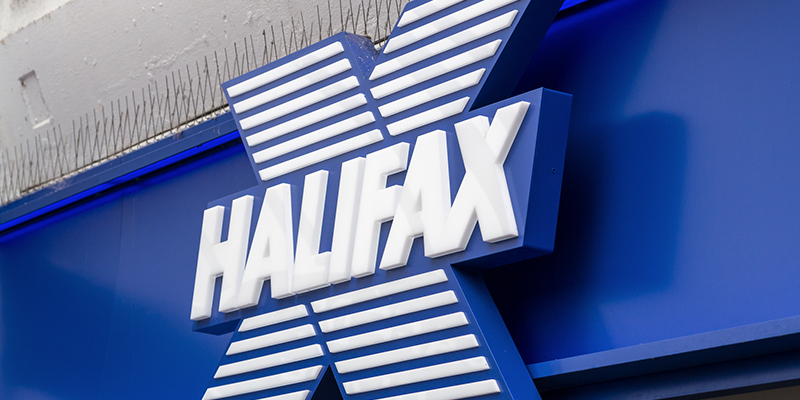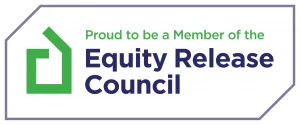How Equity Release Can Help Your Child Purchase Their First Home

For young people, the property market can be a particularly challenging place and many struggle to make the first step onto the property ladder.
Both the initial deposit and income requirements make it extremely difficult for young people to find a mortgage and buy their first house.
As a parent you may be wondering what you can do to help your child purchase their first property – this guide will explain some of the options available to you.
Let’s get stuck in.
- The Current Housing Market
- How Much Deposit is Needed to Buy a Home?
- Can I Get A 0% Deposit Mortgage?
- What is a Family Springboard Mortgage?
- Government Schemes
- Other Options
- Equity Release to Help a Child Buy Their House
- What is a Drawdown Lifetime Mortgage?
- How Can I Help with Equity Release?
- How Long Does Equity Release Take?
- Conclusion
The Current Housing Market
The housing market in the UK has been in somewhat of a crisis for decades now. The long and short of it is that there aren’t enough homes being built to cope with a growing population.
That means that demand for properties nearly always outweighs the number of houses on the market and prices increase. In some areas the demand is so high that property prices have soared in value.
When the pandemic hit in 2019, the expectation was that property sales would decline, and prices would level out initially there was a great deal of optimism that houses would once again fall into a more affordable range.
But the government under Rishi Sunak (Chancellor) decided to help the property sector by removing stamp duty for many buyers which caused a surge in market activity as many clamoured to buy properties without the usual tax burden.
For first time buyers (who are normally stamp duty exempt) this meant the market became even more competitive for them and buying a house during the COVID-19 pandemic was a frustrating experience.
Today, stamp duty has been re-introduced but the 2 year frenzy of activity has made house prices surge uncontrollably.
In fact, the Halifax have stated that average house prices in 2021 alone rose by £24,500 across the UK.
It seems to be a bleak outlook for first time buyers who often struggle to get deposits and with price increases far outstripping savings it is, without doubt, an uphill battle for many.
How Much Deposit is Needed to Buy a Home?
Different lenders have different requirements when it comes to mortgage deposits and there are two fairly common deposit levels in the UK.
1) 10% deposits have long been the industry standard and most lenders operate a mortgage product with a 10% deposit requirement. For example, if you’re looking to buy a house worth £300,000 the lender would ask that you have £30,000 to contribute as a deposit.
2) 5% deposits have become more common over the last twenty years with lenders realising how much of a barrier to entry the deposit requirement is to obtaining a mortgage. Many lenders now offer a 5% deposit option but because there is a higher risk of negative equity with defaults, these products tend to have higher interest rates than a 10% deposit mortgage.
Can I Get A 0% Deposit Mortgage?
You might remember some lenders offered 0% mortgages before the 1998 property market crash.
These particular products turned out to be very high risk and alongside other mortgage products contributed to the overall market crash.
As a result, lenders don’t offer 0% mortgages in the traditional sense but there are some UK lenders that offer what’s known as guarantor mortgages that are often advertised as a replacement for 0% deposit mortgages.

A guarantor mortgage still requires a deposit of sorts, and the lender will ask a parent or close family member to guarantee the mortgage either by way of savings or putting their own property down as collateral.
In the event the mortgage isn’t paid, the bank has the security of the mortgage (and deposit) being guaranteed by the guarantor’s savings or property and the guarantor paying back anything owed on the mortgage.
Free consultations are available in the UK.
Get Started NowWhat is a Family Springboard Mortgage?
Some banks offer these products that work as a hybrid of guarantor and traditional mortgages.
Typically, if your child has a 5% deposit, they will offer a mortgage providing you put down 10% as collateral in a savings account.
The key difference is that with a family springboard mortgage you’re only guaranteeing the agreed deposit amount and not the entire mortgage as is the case with a guarantor mortgage.
Government Schemes
There were three main government schemes that would help first time buyers onto the property ladder. Unfortunately, the Help to Buy ISA scheme that was popular for a number of years was discontinued in March 2021.
The remaining two schemes are
- Right to Buy This is a general scheme aimed at anyone who has lived in a council property or some housing association properties for a number of years. It enables those that are eligible to buy the property at a discounted value.
This scheme can be helpful for first time buyers as you would be able to get a 100% mortgage with some lenders. This is because the difference between the actual property value and the discounted value can act as a deposit.
This is subject to lending criteria and sometimes the discounted value isn’t enough to achieve a suitable deposit and you may still need to put a deposit down.
- Help to Buy Equity Loan This scheme is open for UK citizens over the age of 18 that have never bought or owned a property in the UK before.
The property being bought MUST be a new build property and sold by a homebuilder that is registered with the scheme. Depending on where you live in the UK there is a maximum property purchase price as well so for example if you’re buying in the North East you will only be able to use the scheme if the property value is £186,100 or under.
Buyers still need to pay 5% deposit and the government then contributes a loan of up to 20% (40% for London) of the property value. You WILL need to repay this loan, but it is interest free for the first 5 years.
The general idea of the scheme is to help people get a property and establish a home before making payments on the loan after 5 years.
Other Options
For many, the idea of guaranteeing a mortgage product and potentially losing savings or a property is unattractive.
Your savings might be important for retirement or the property that you own might be the only place you have to live.
When putting down savings or a property as collateral, the lender will always stipulate you have the risk of losing them entirely.
For this reason, parents over the age of 55 are now looking at equity release as a means to help children get onto the property ladder and mitigate some of the risks.

With equity release, you would gift the deposit to your child and still be able to live in your property until you die or go into long term care regardless of if your child maintains their mortgage payments.
What Our Clients Have To Say
Equity Release to Help a Child Buy Their House
Equity release allows you to free up the cash tied up in the equity of your property. It is available to property owners in the UK over the age of 55 with no mortgage or only a small mortgage remaining on the property.
Typically, you can release up to 50% of the equity in your property but you don’t need to release the full amount and many lenders allow you to take as little as 18%.
The lender will then pay you the money as a lumpsum, regular payment or both and you can spend it on whatever you need or want to.
The loan has a fixed interest rate that is accrued monthly until you die or go into long-term care.
However, you don’t need to make payment on the loan. If you decide not to make monthly mortgage payments, the interest payable will compound with your mortgage balance.
When you pass away or go into long-term care the property is sold by the lender to redeem the mortgage balance at that time.
The sale means the lender can recoup the capital and interest of the loan and any money left over from the property sale will go to you (if in long-term care) or into your estate (if deceased).
What’s the Most Popular Equity Release Product?
There are two types of equity release products that are available in the UK. For the purpose of releasing equity so your child can buy a house the most popular product is a drawdown lifetime mortgage.
What is a Drawdown Lifetime Mortgage?
This is an equity release product that allows you to drawdown the cash released as and when you decide to.
When you release the equity from your property the lender will put the money in a reserve bank account that you can use whenever and however you choose.
This product is great for the flexibility it offers, and you can always budget certain amounts of the equity release and keep some back in case you want to use it later in life.
Once the money is in the reserve account, it is entirely up to you how you wish to drawdown, and you could drawdown all at once if you wanted to.
Another advantage of this product is that you can leave a pot of money in the reserve account to leave as an inheritance if you pass away.
How Can I Help with Equity Release?
Equity release allows you to give your children money without worrying about inheritance tax (IHT) liabilities. This is because the money doesn’t fall as part of your estate and doesn’t get taken into consideration for IHT purposes.
Your child can then use this money as a gifted deposit in order to get a mortgage on their own property.
The equity release product and the new mortgage your child gets are completely separate and if your child is unable to keep up payments on the mortgage, it will not impact your equity release.
This means that you have the option to help your child get onto the property ladder and you can still live in your house until you pass away or go into long-term care.

Equity Release is a complex product in its own right though and even though you will be able to gift the money to your children, there will be things you need to take into account when taking an equity Release product.
Boon Brokers have created an in depth guide to Equity Release products including the advantages and disadvantages as well as advice for finding the right lender for your needs and circumstances.
How Long Does Equity Release Take?
Obtaining an Equity Release product is fairly straightforward, but the industry is well-regulated, and you will likely need to seek professional advice.
Here is an overview of how long equity release takes:
1) Equity Release advice 2-4 Hours
2) Completing the application The time frame varies but your advisor will complete the application and then get evidence such as ID to submit to the lender.
3) Application submission This is completed using an online portal and typically takes no longer than 2 hours.
4) Property valuation The lender will conduct a valuation of your property. Normally a valuation takes about 30 minutes.
5) Formal offer Once the lender is satisfied that you and the property meet their criteria, they will make a formal offer. It normally takes about 48 hours after the valuation for a formal offer to be made.
6) Legal advice and requisitions Because this is a property transaction, you will need legal advice and to sign and complete forms. The legal process normally takes between 1-2 weeks.
7) Completion You’re all set, all the documentation has been completed and funds are released.
Conclusion
There are many ways that you can help and guide your child when it comes to getting onto the property ladder for the first time.
Unfortunately, all options have pros and cons (even the government schemes), so it is best to talk to a professional advisor.
Boon Brokers is a whole of market UK mortgage, insurance and equity release broker, and we can advise on all products, schemes and options mentioned in this article.
Call us today for FREE no obligation advice.
Gerard BoonB.A. (Hons), CeMAP, CeRER
Gerard is a co-founder and partner of Boon Brokers. Having studied many areas of financial services at the University of Leeds, and following completion of his CeMAP and CeRER qualifications, Gerard has acquired a vast knowledge of the mortgage, insurance and equity release industry.Related Articles
- How Much Equity Can I Release?
- What Happens On Death With Equity Release?
- Can I Sell My House If I Have Equity Release?
- Equity Release For A Buy To Let Mortgage
- How Does The ERC Protect You
- How Much Does Equity Release Cost?
- Remortgage Or Equity Release
- What Is Home Reversion?
- Everything To Know About Equity Release
- Can I Release Equity To Purchase A Second Home
- How Does Equity Release Affect Your Family
- Equity Release Companies To Avoid
 Authorised and regulated by the Financial Conduct Authority. No: 973757
Authorised and regulated by the Financial Conduct Authority. No: 973757




